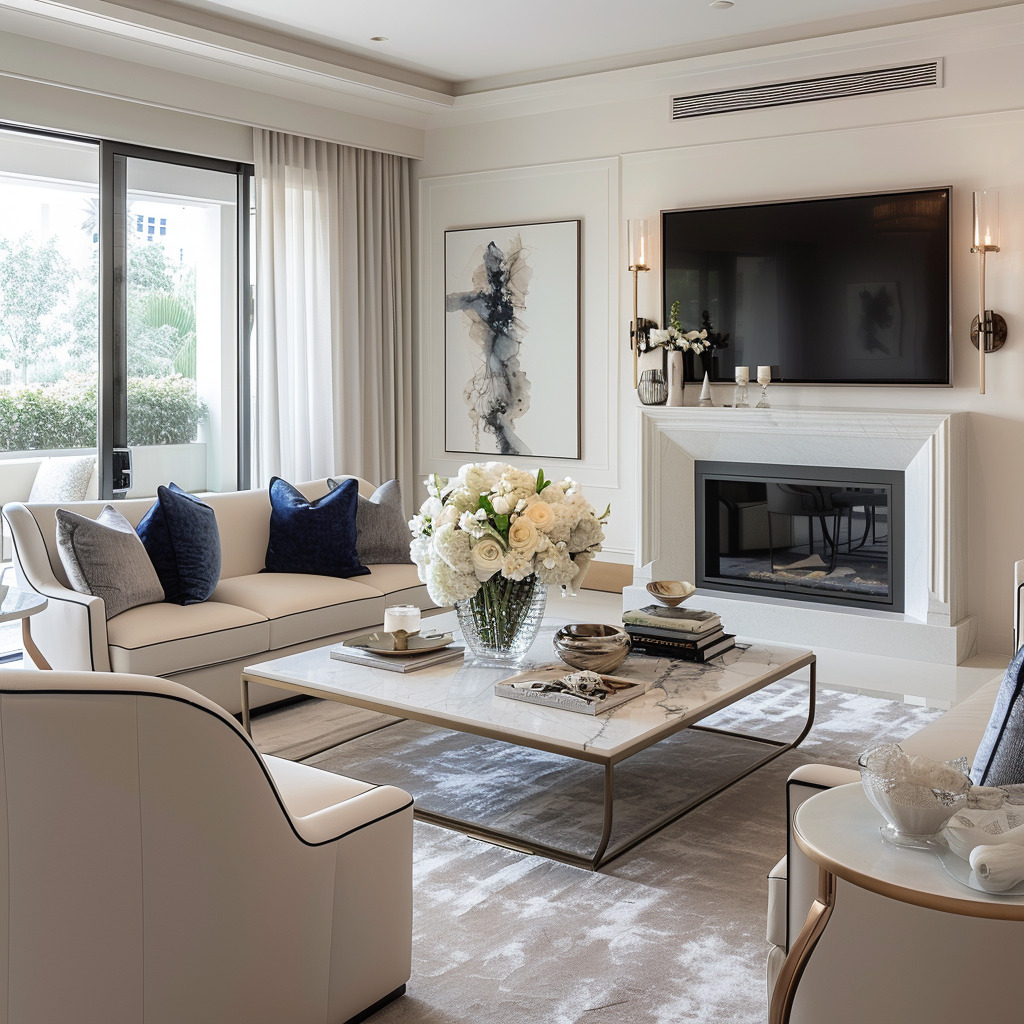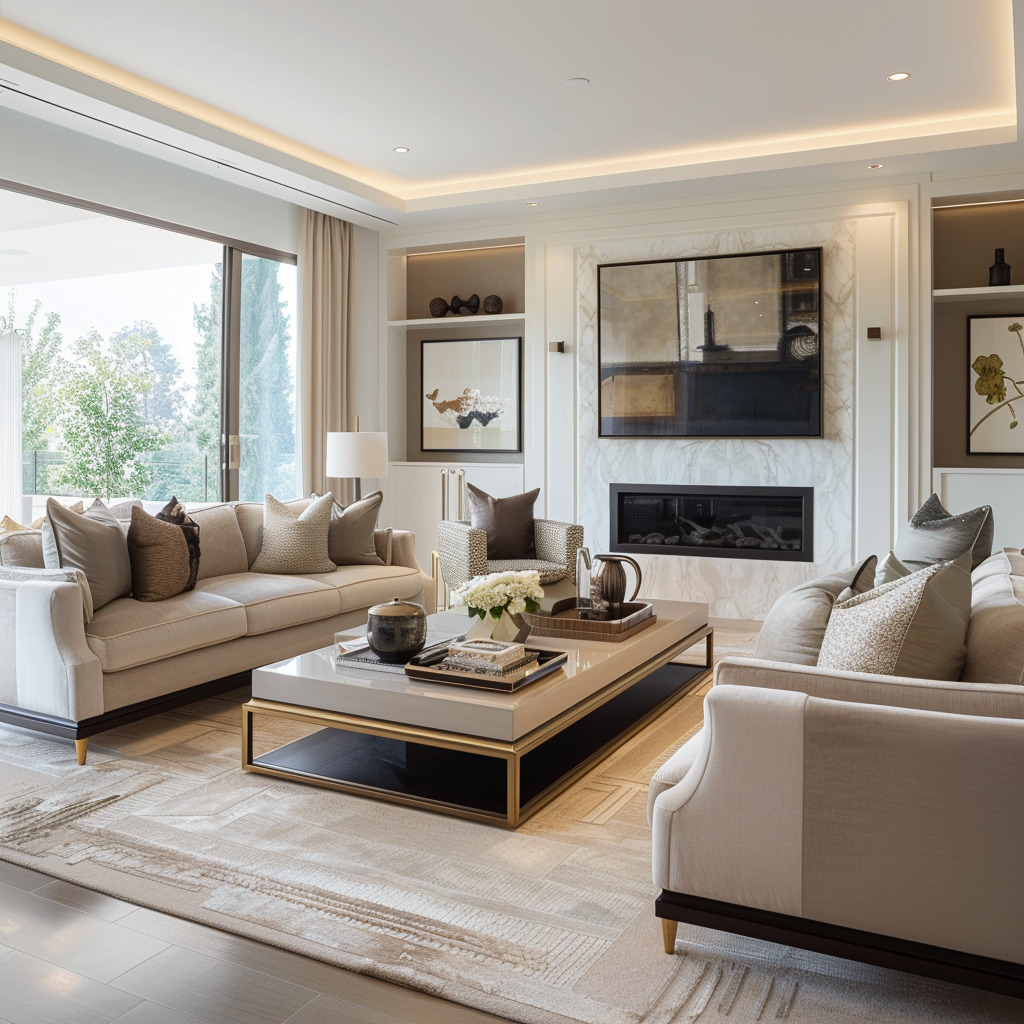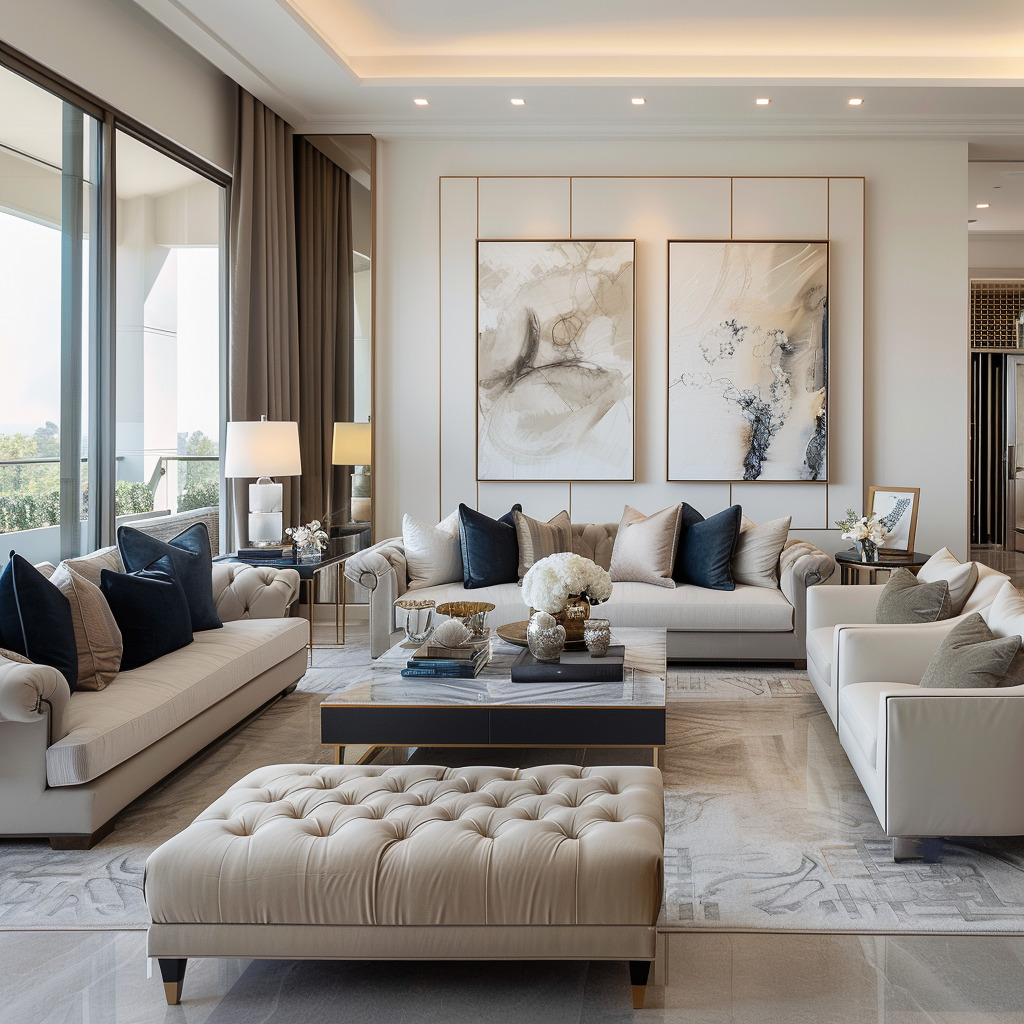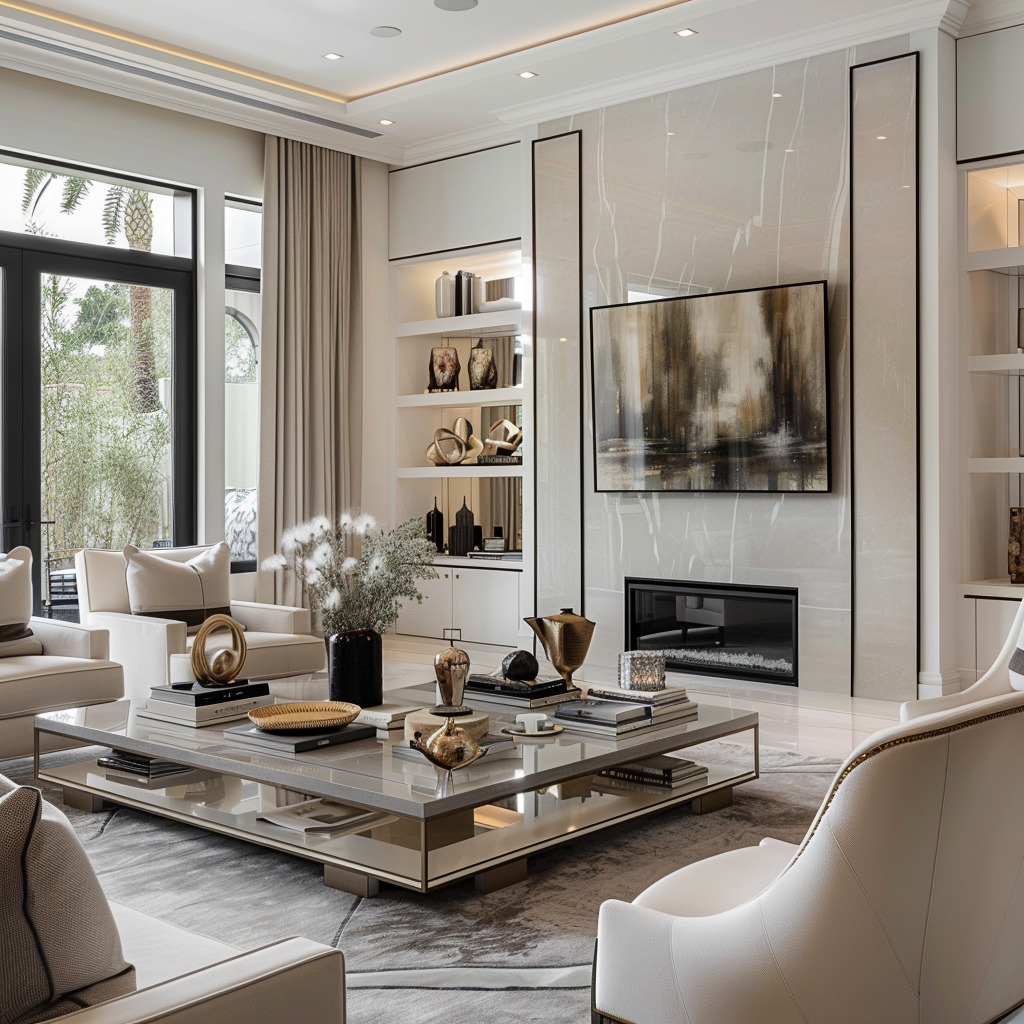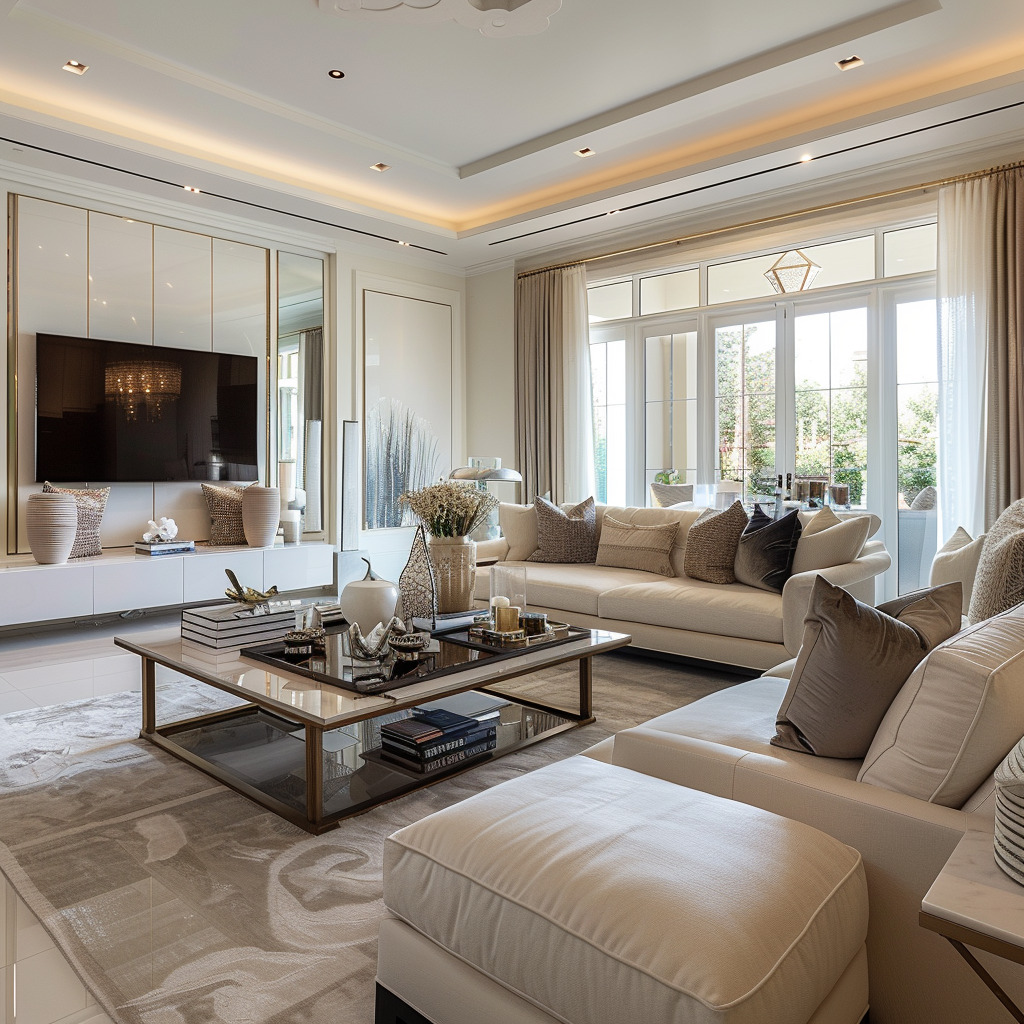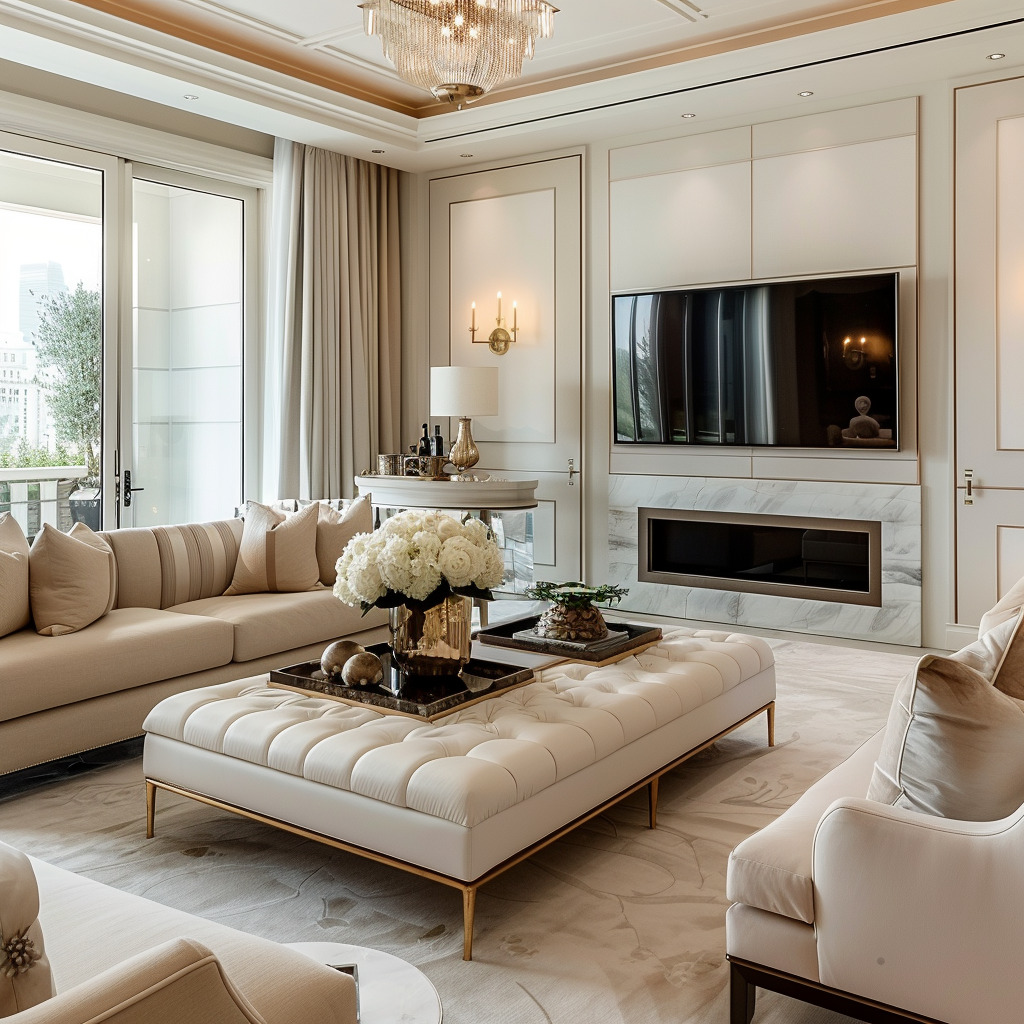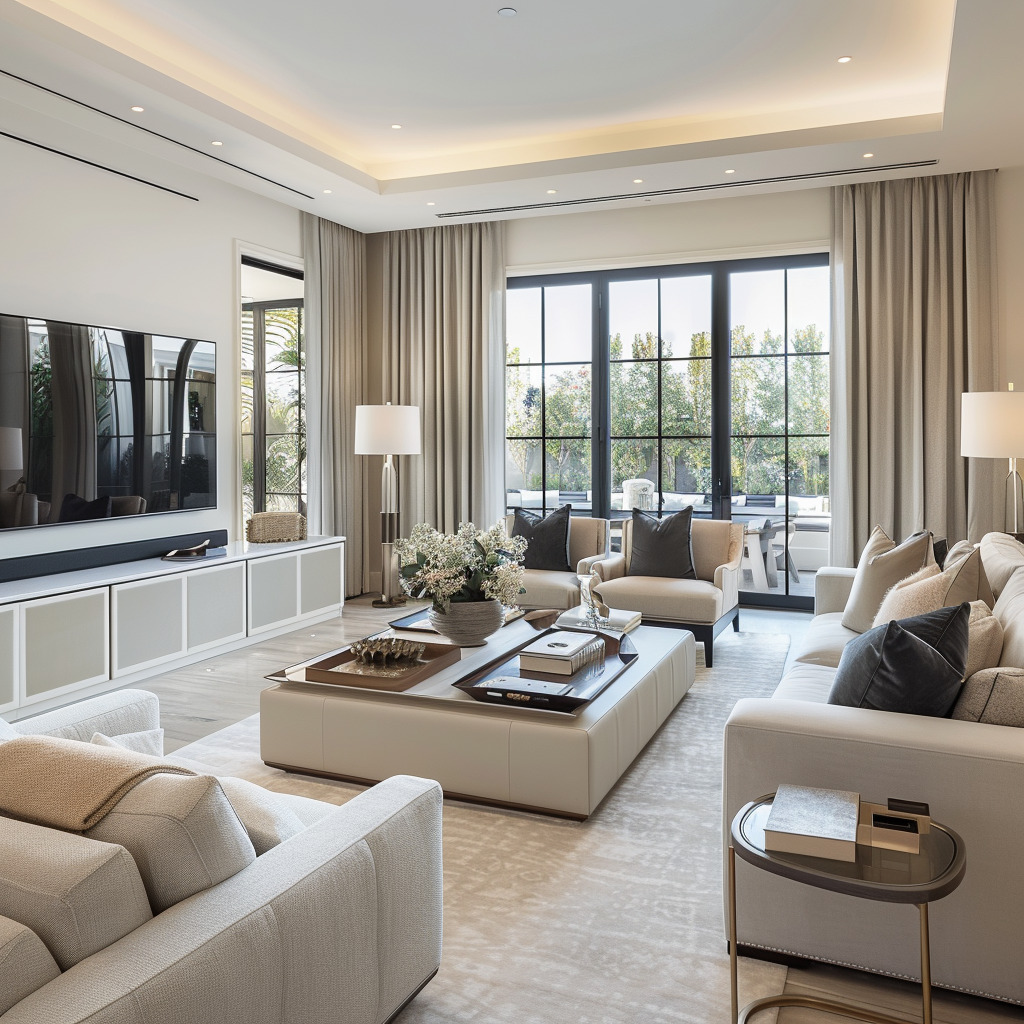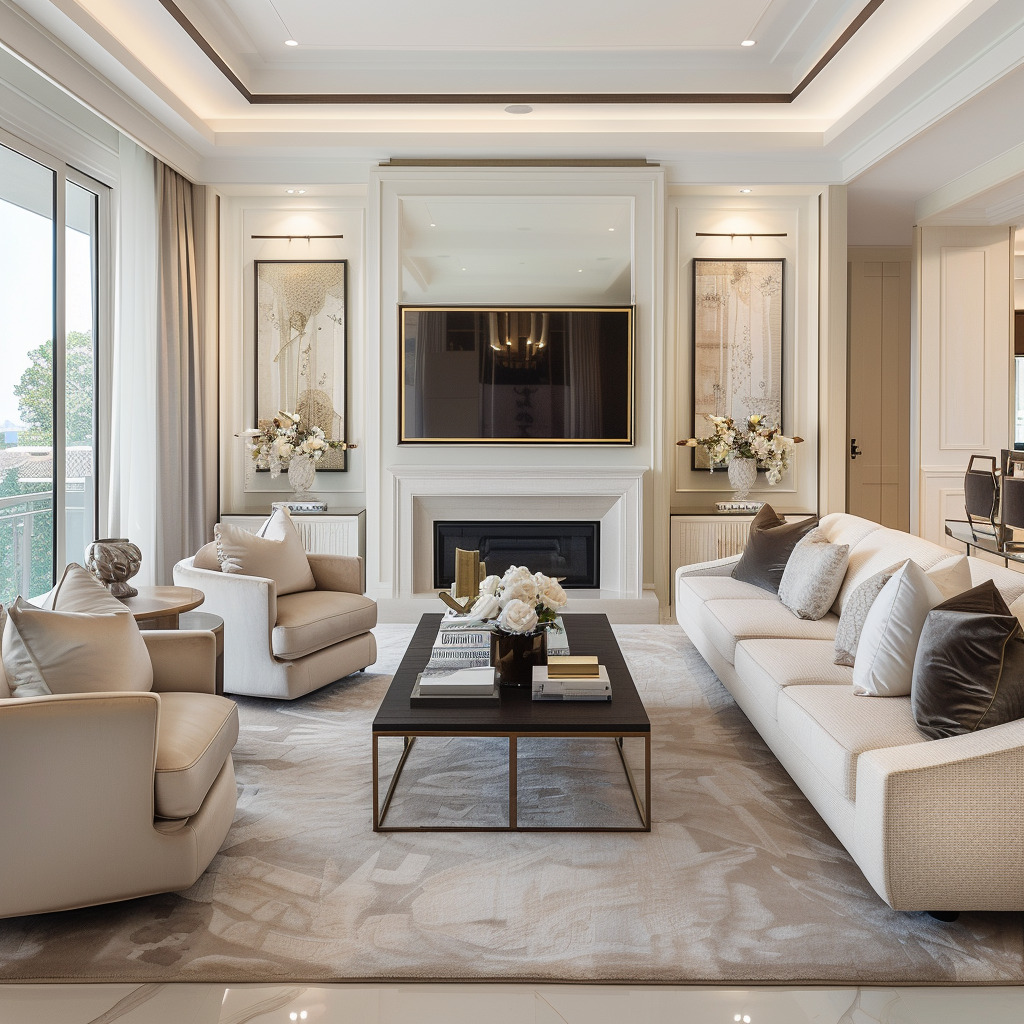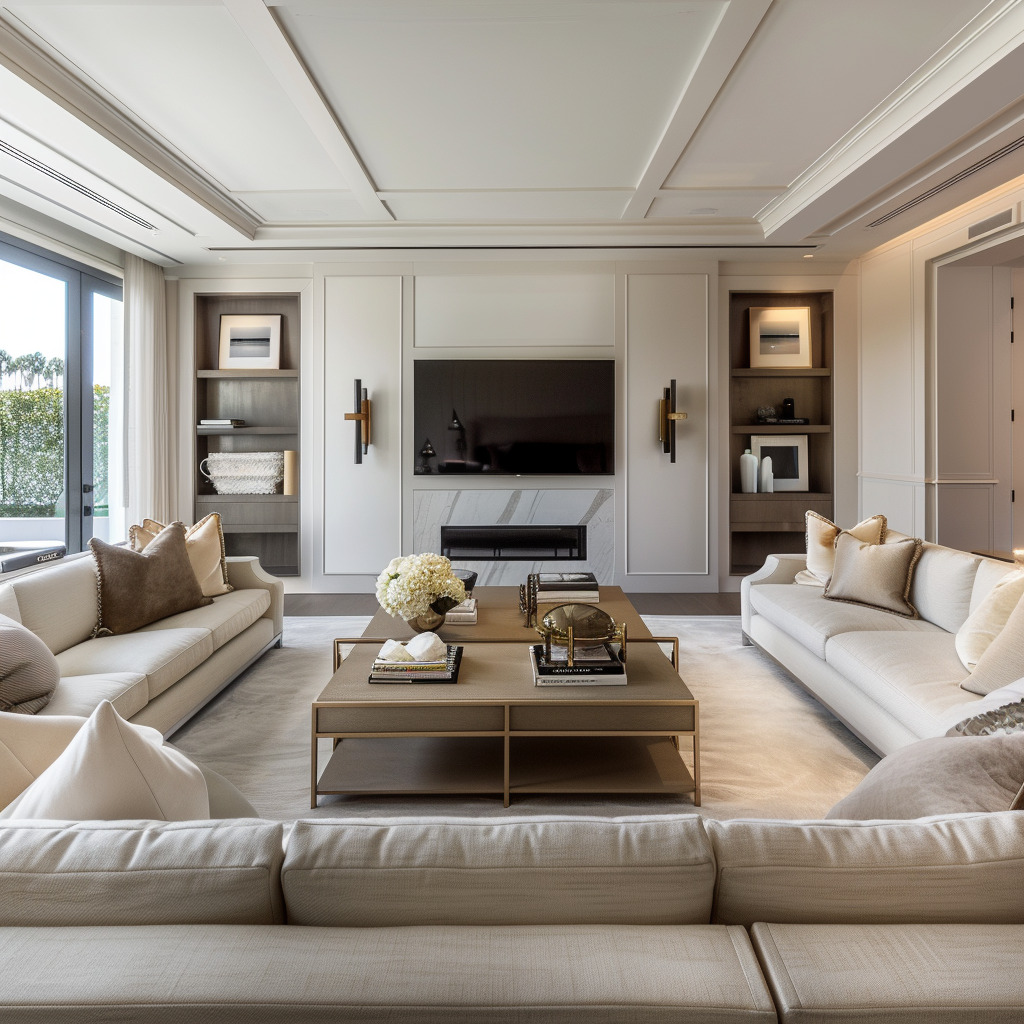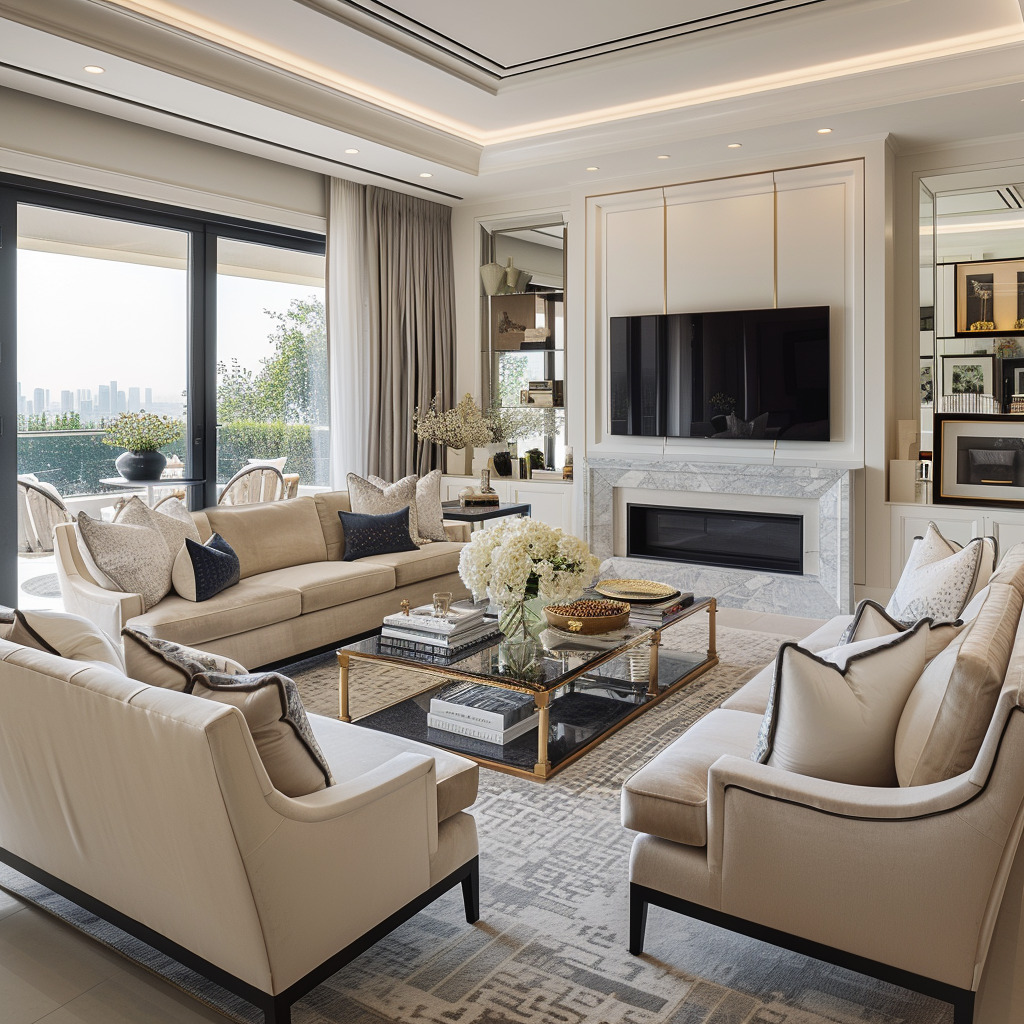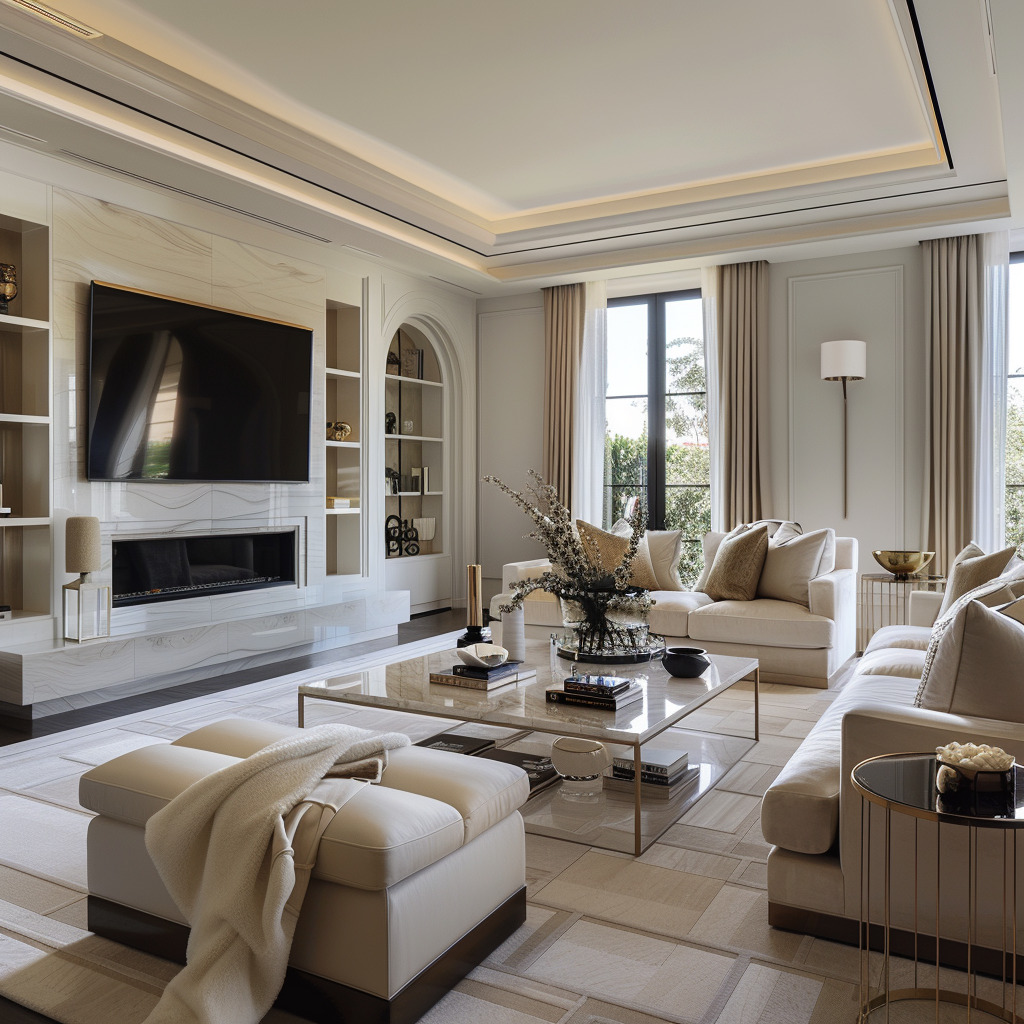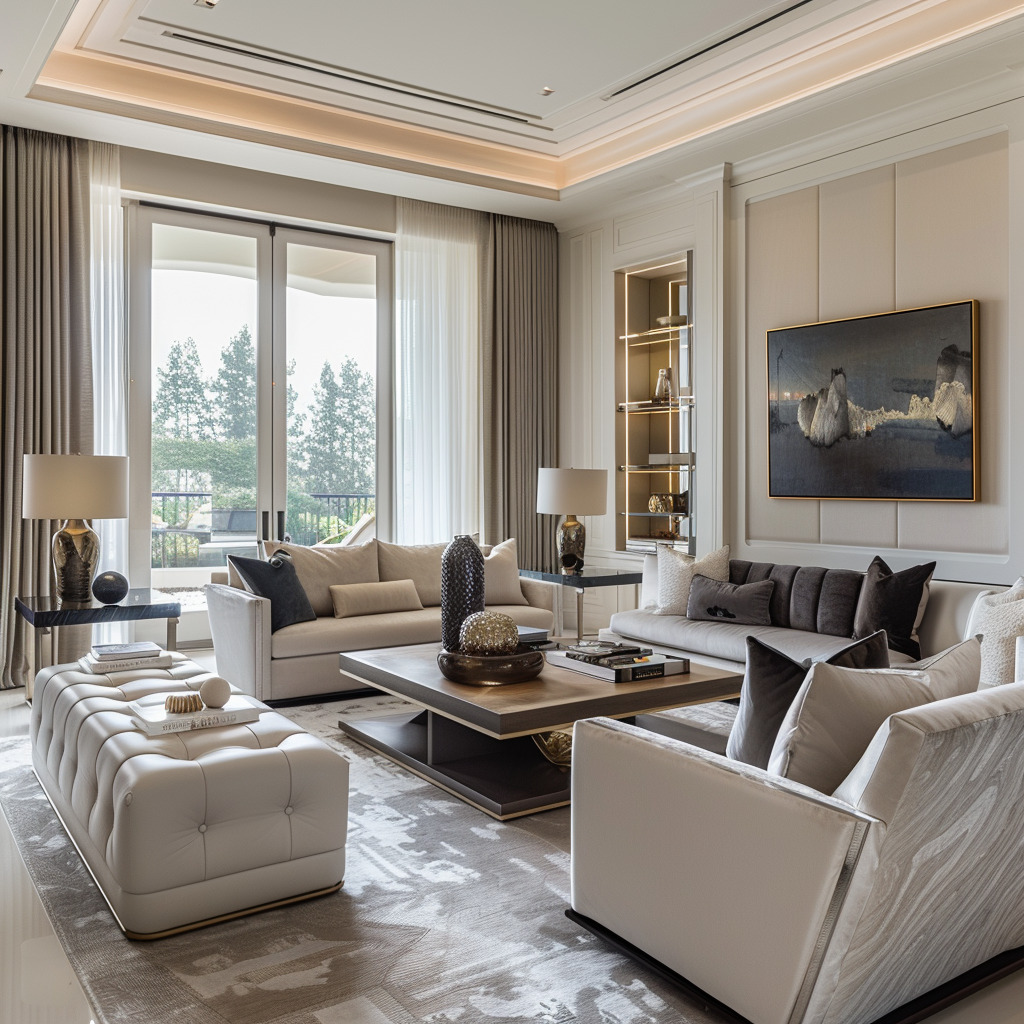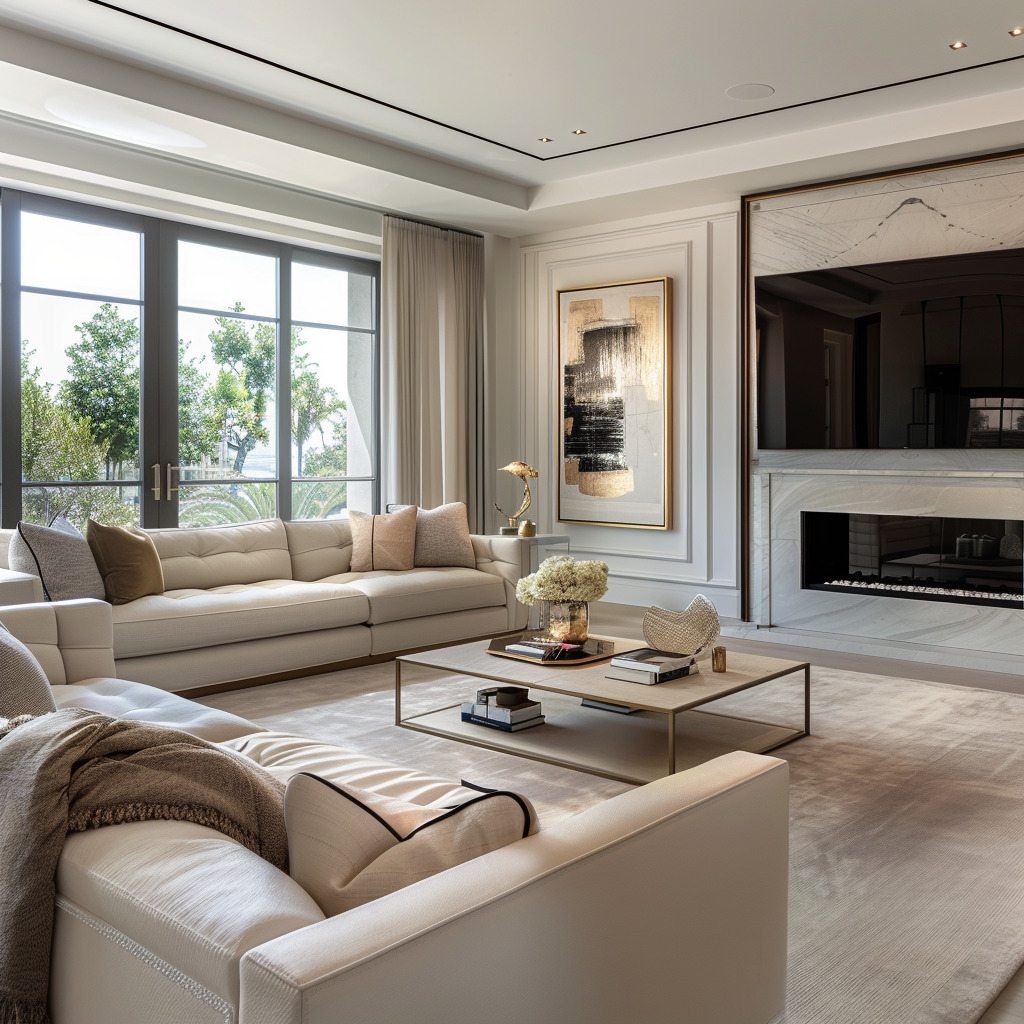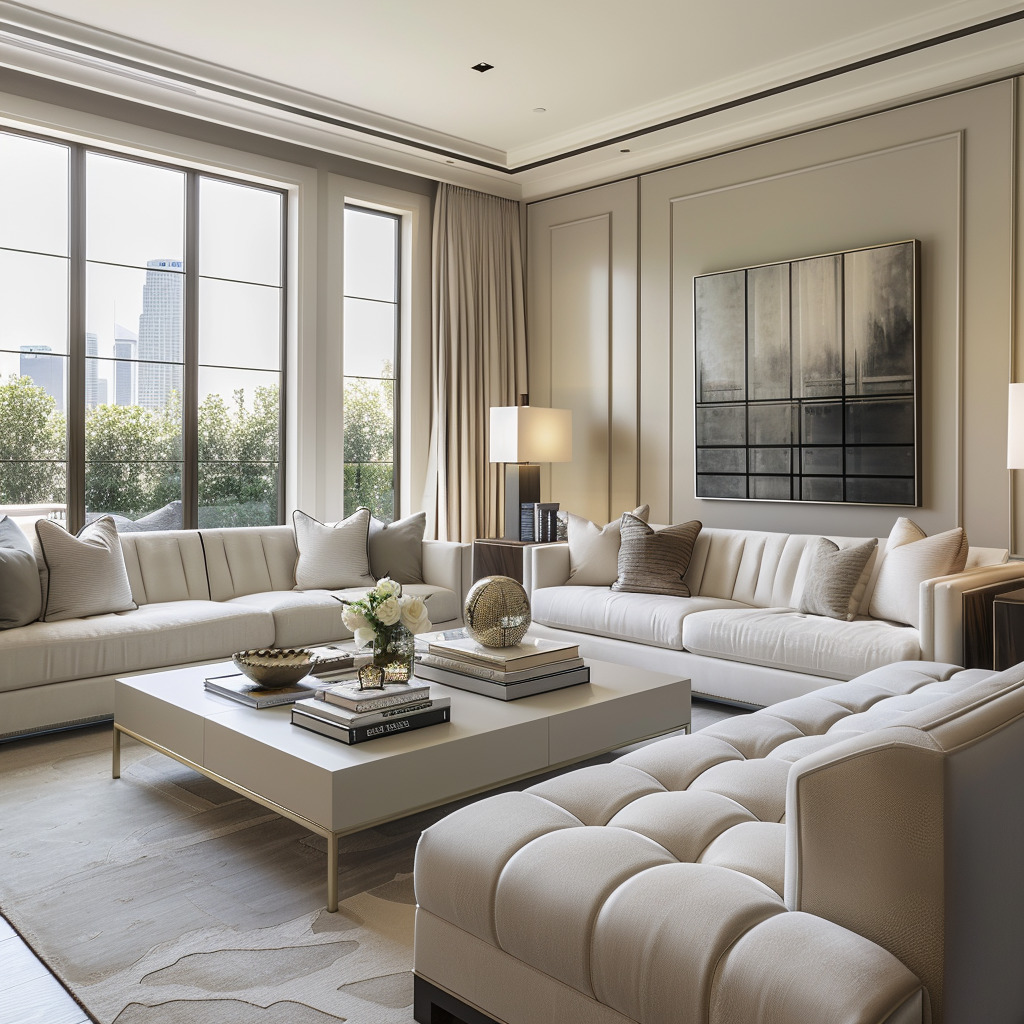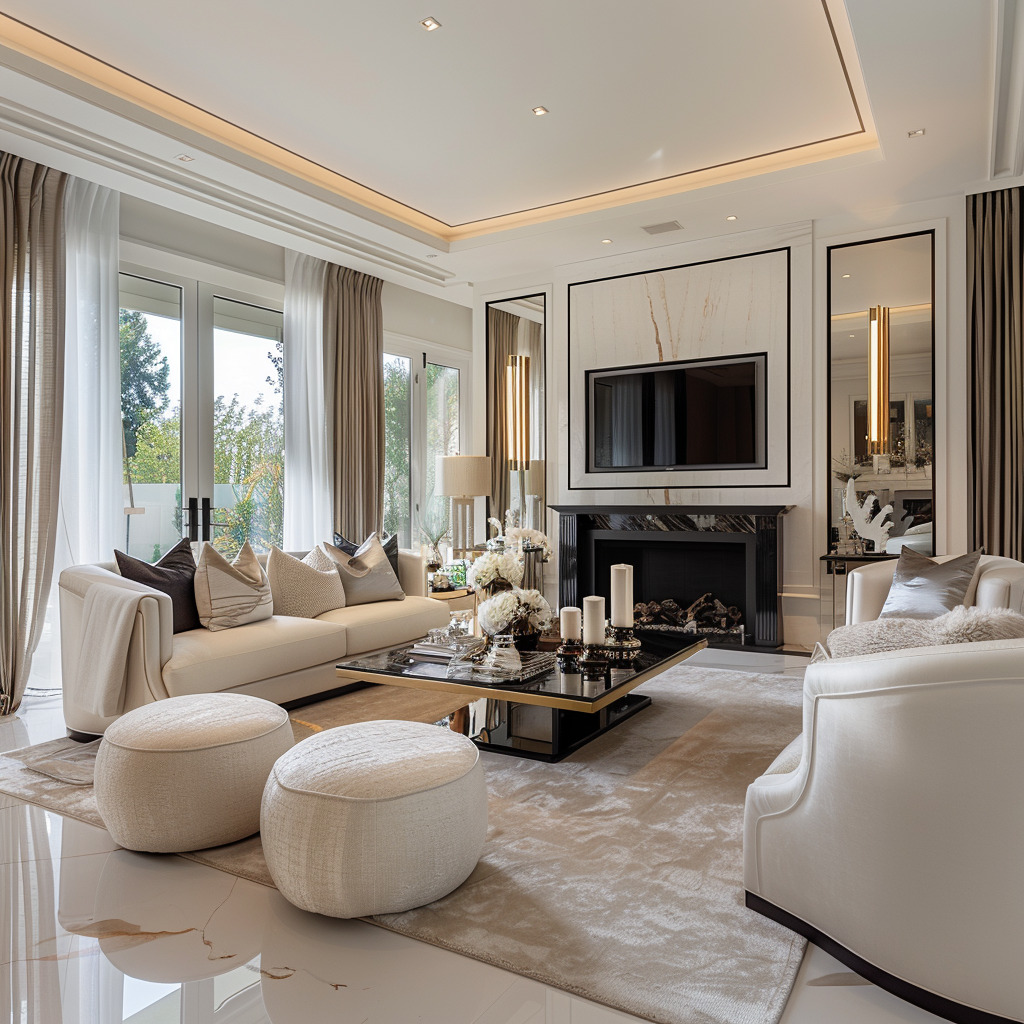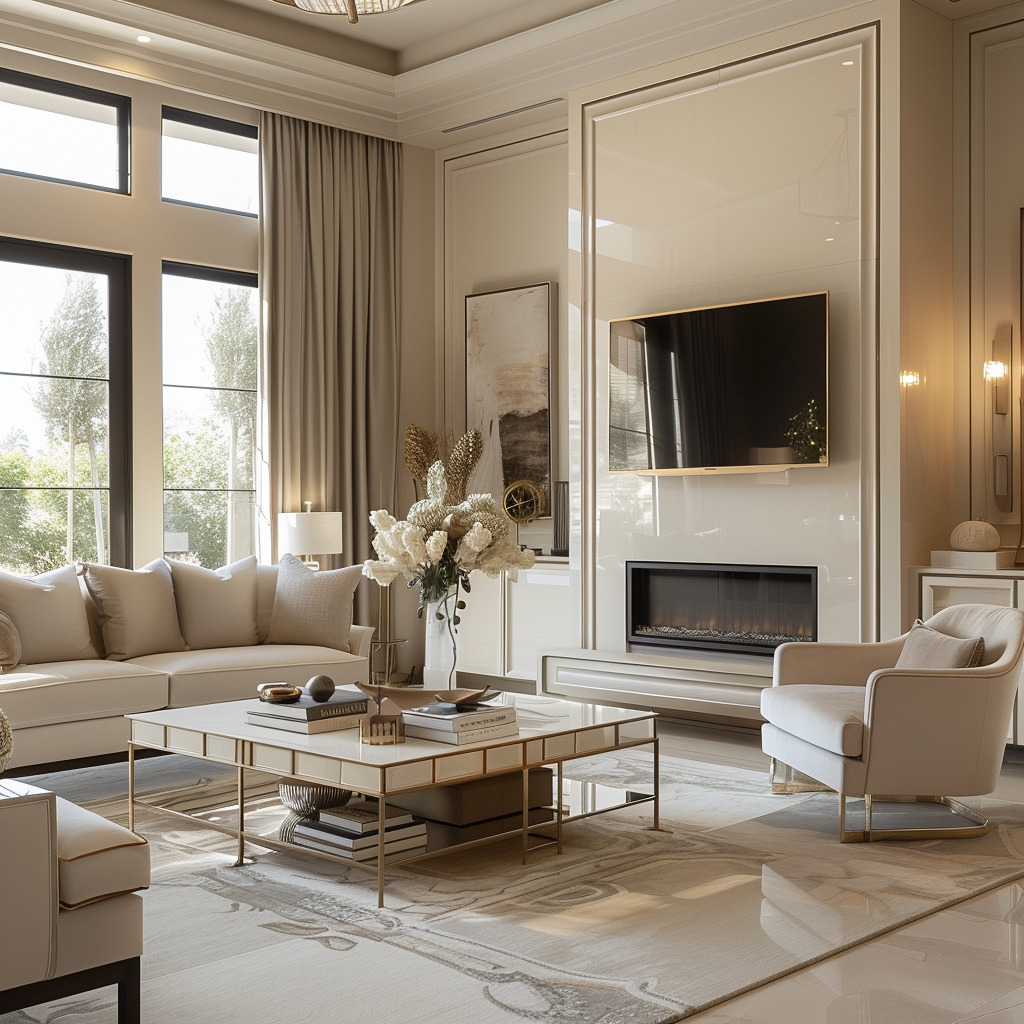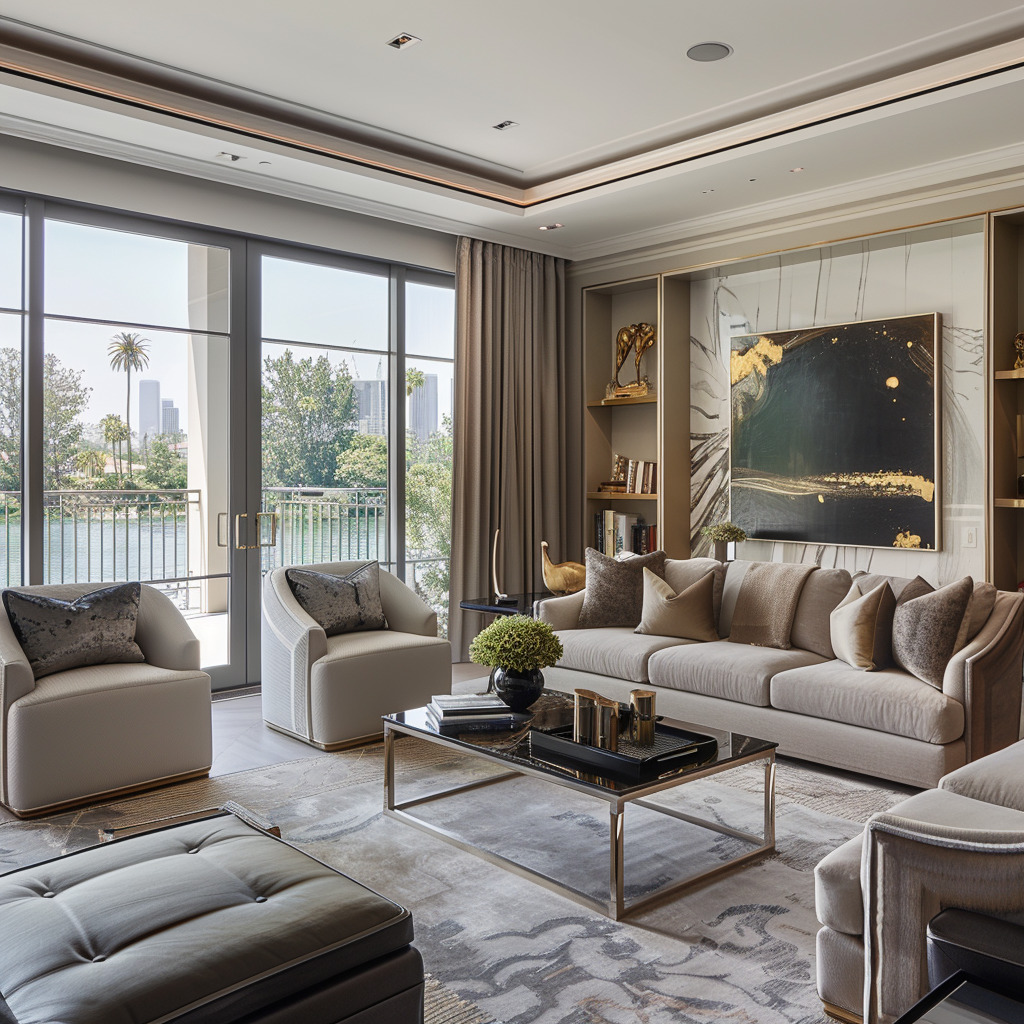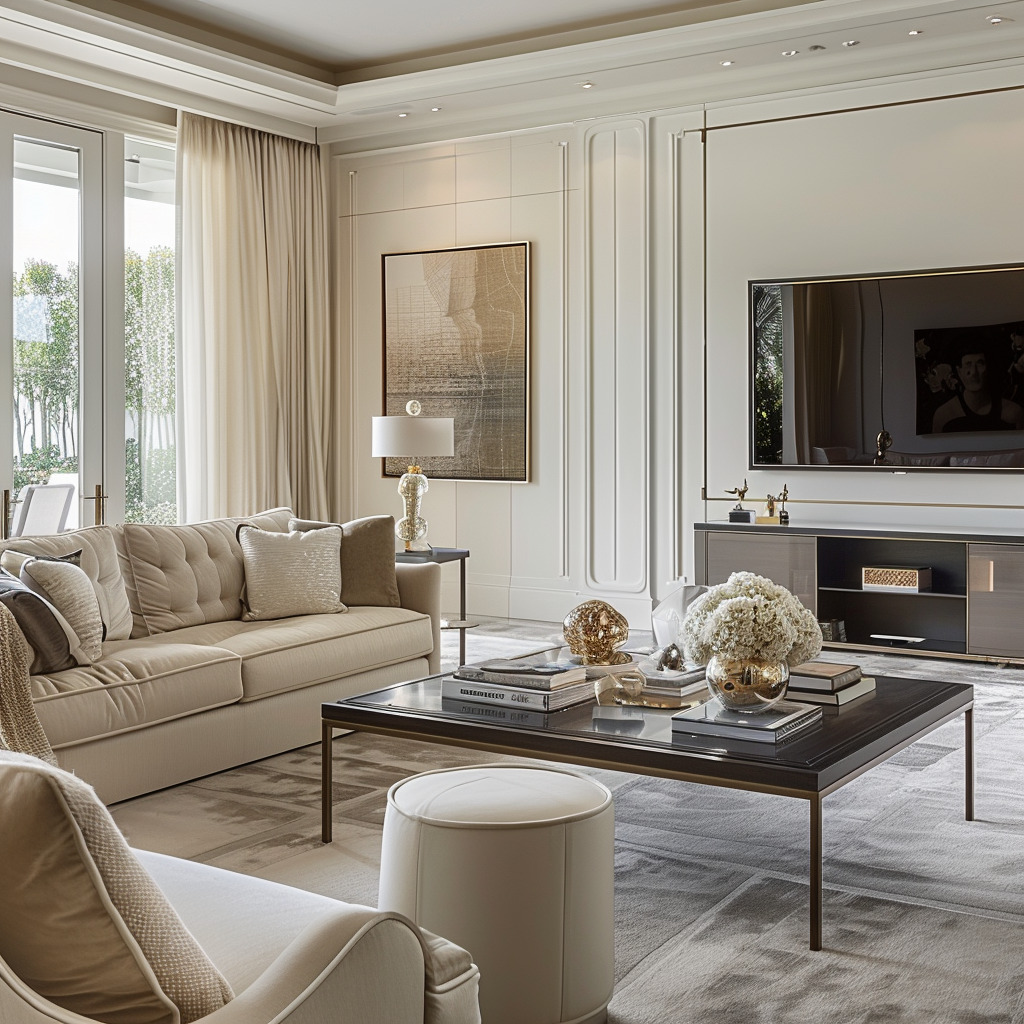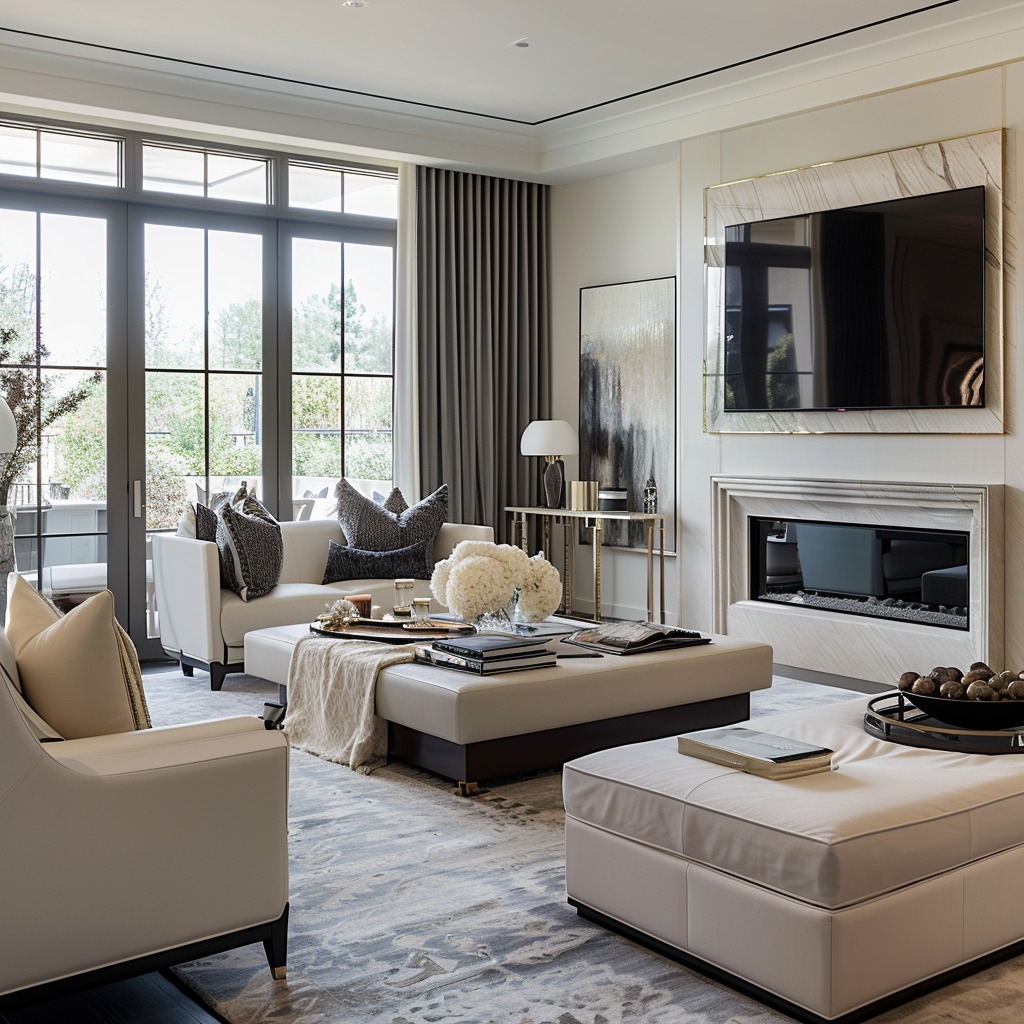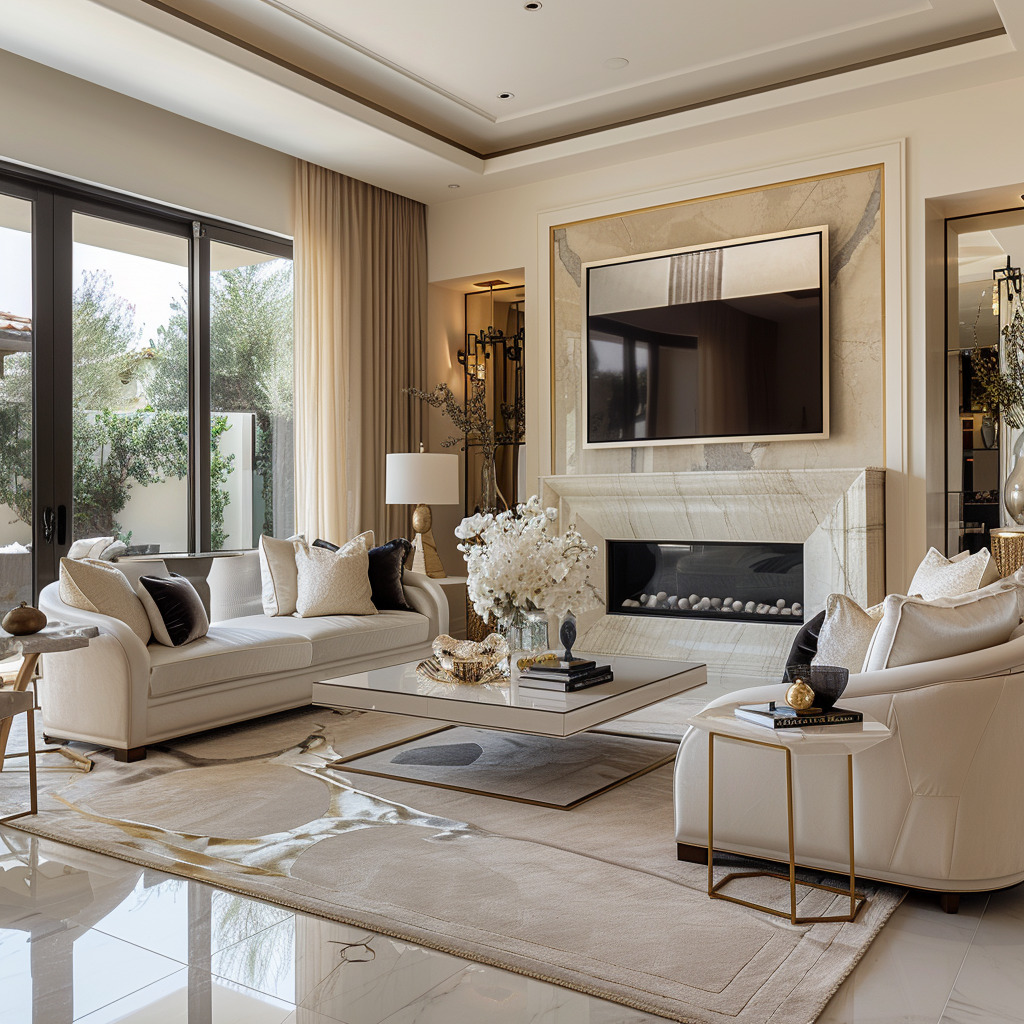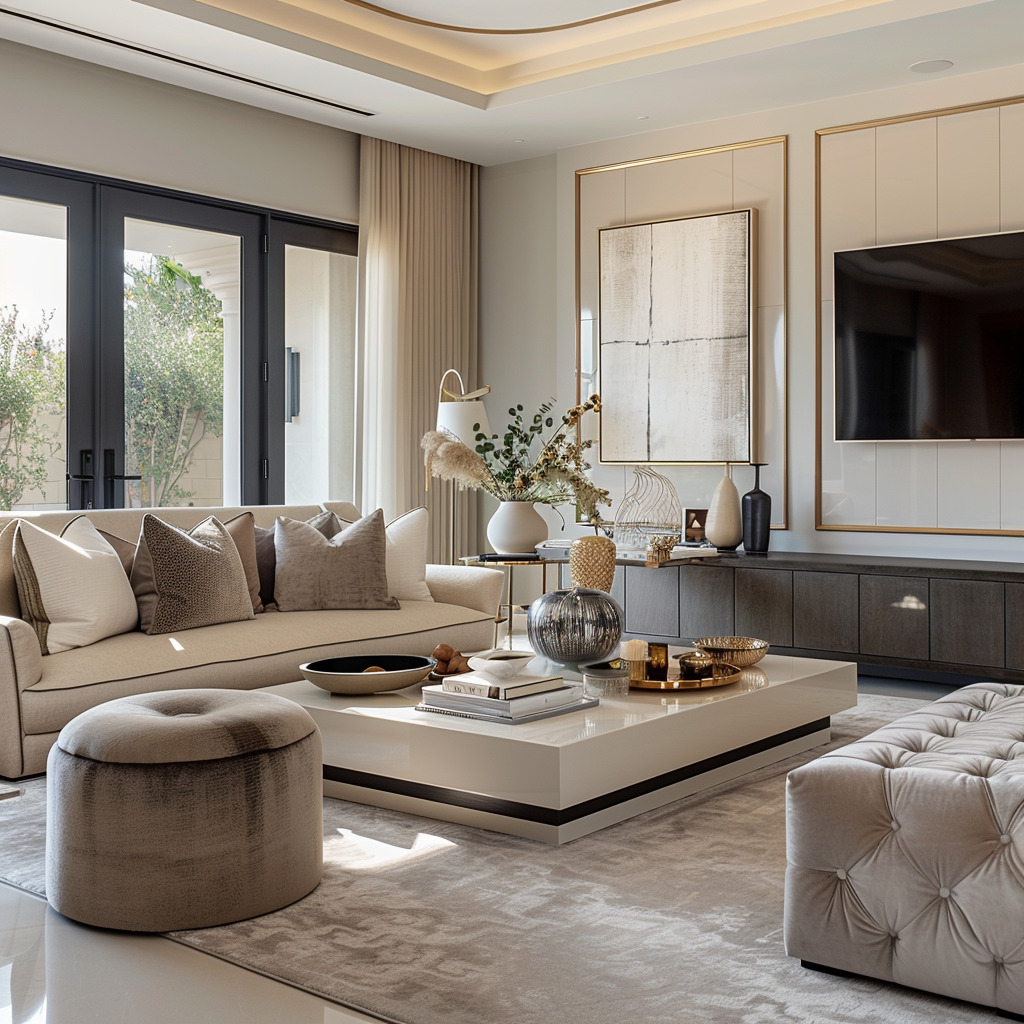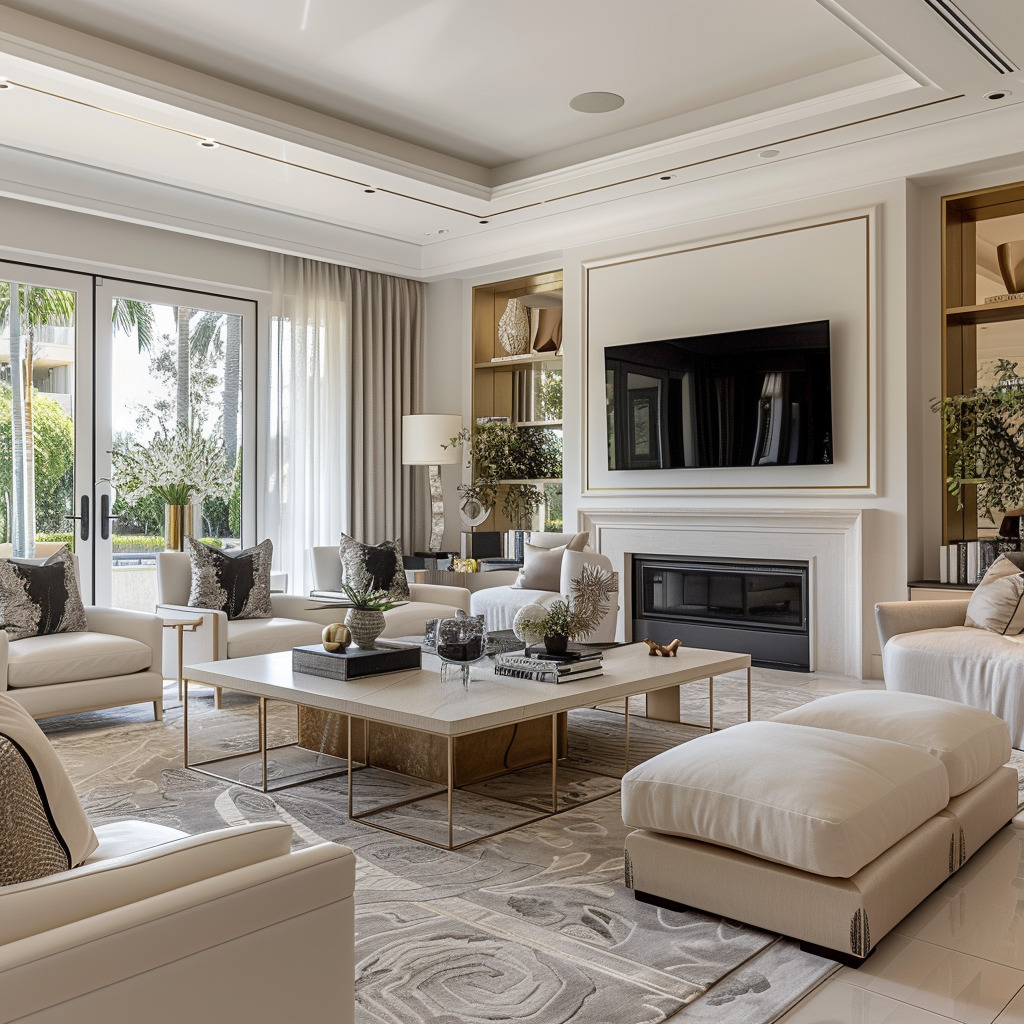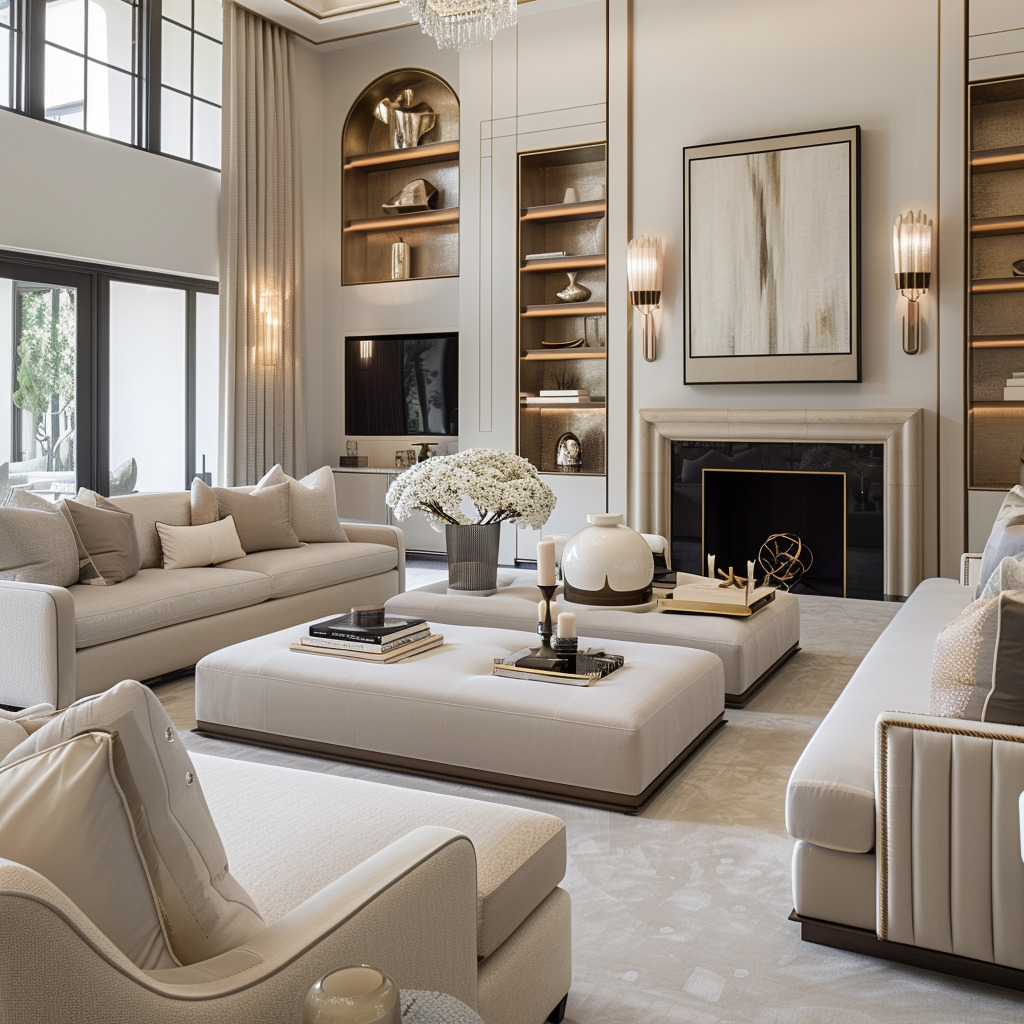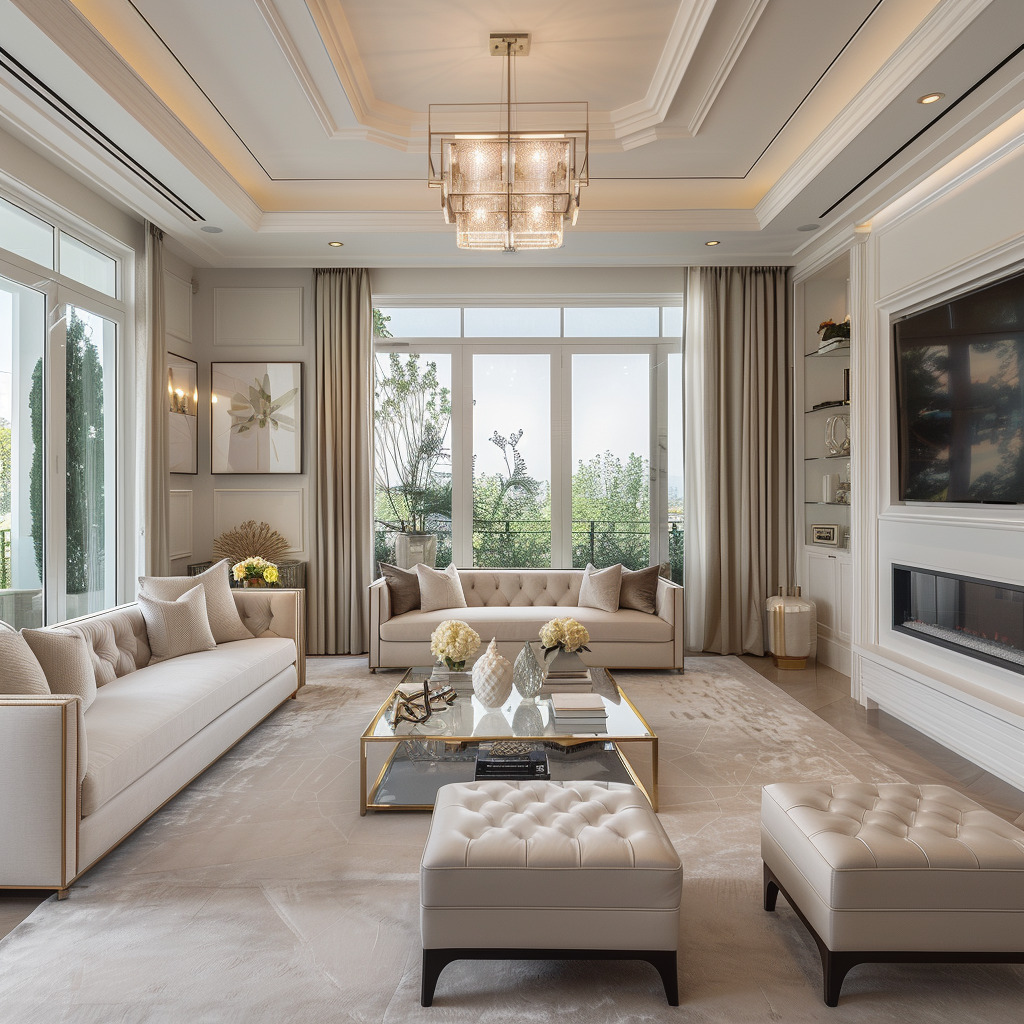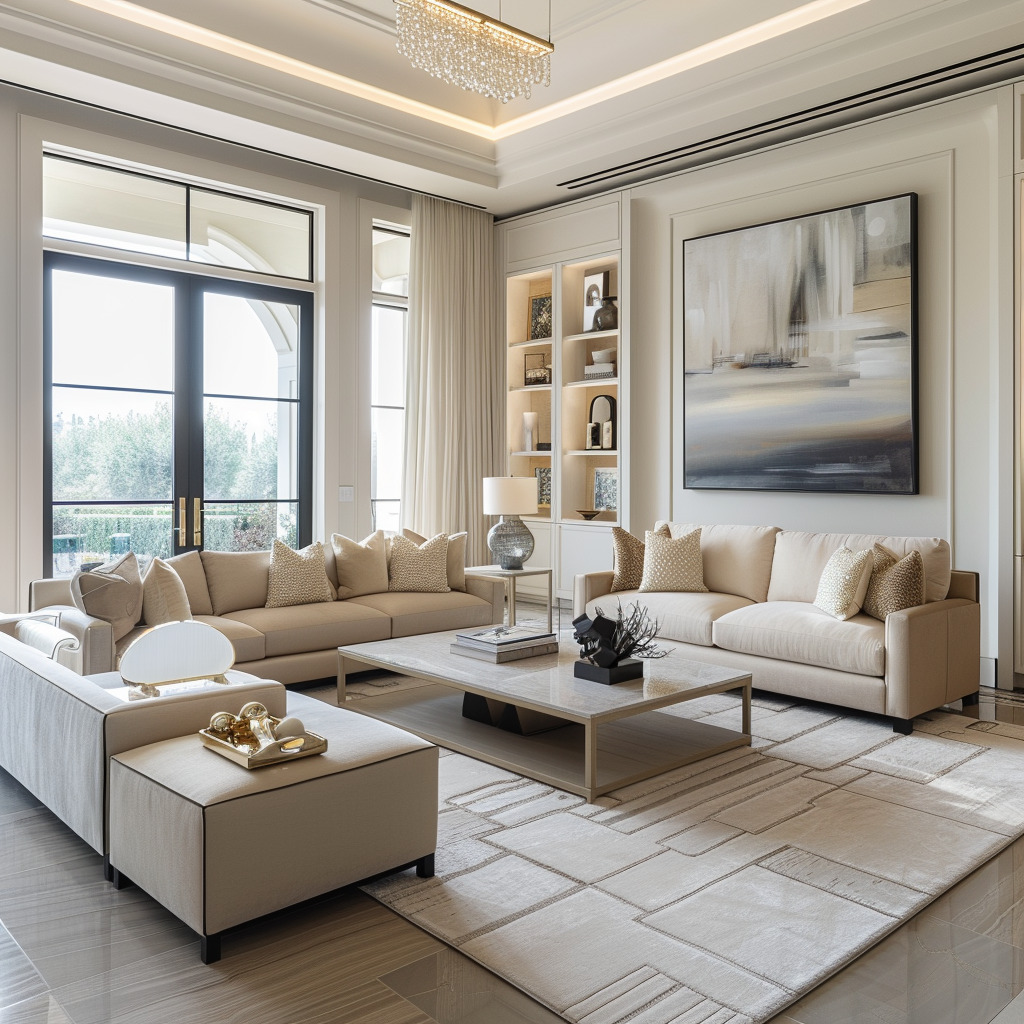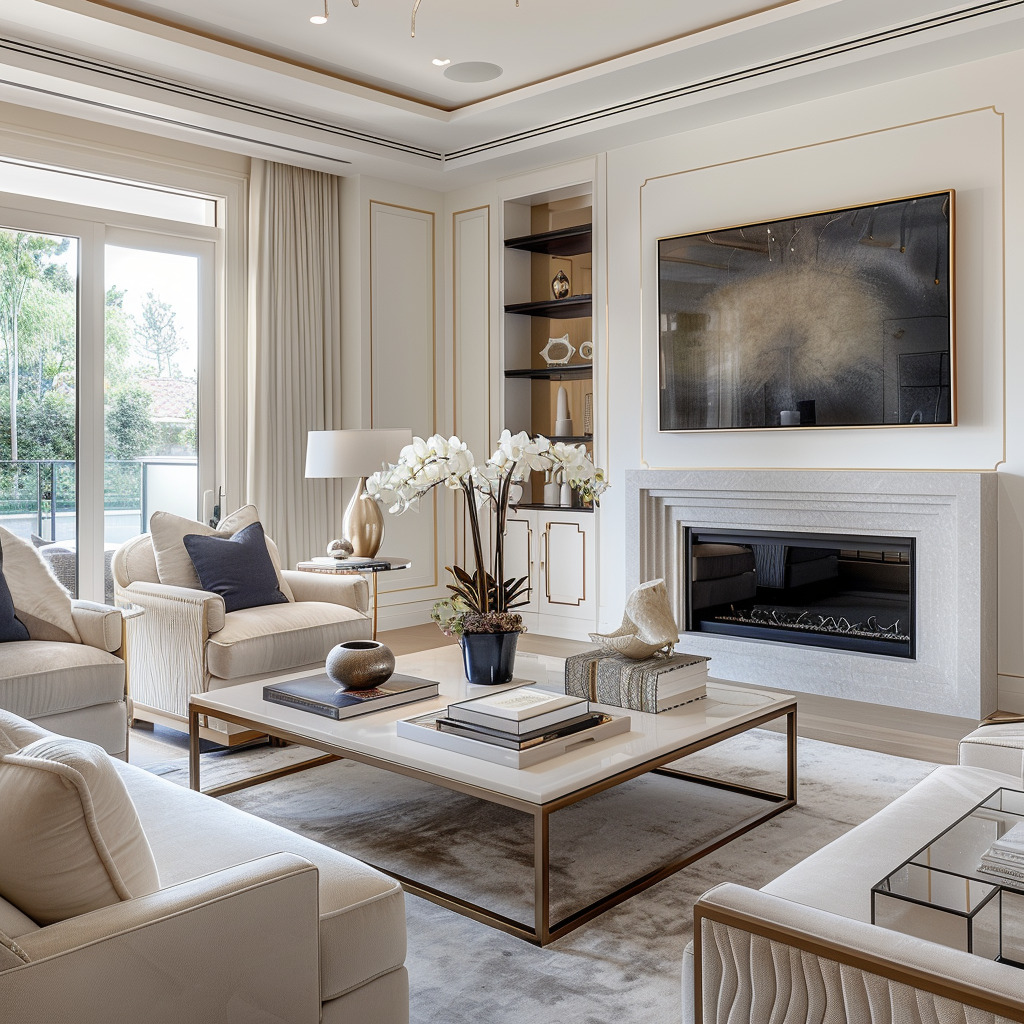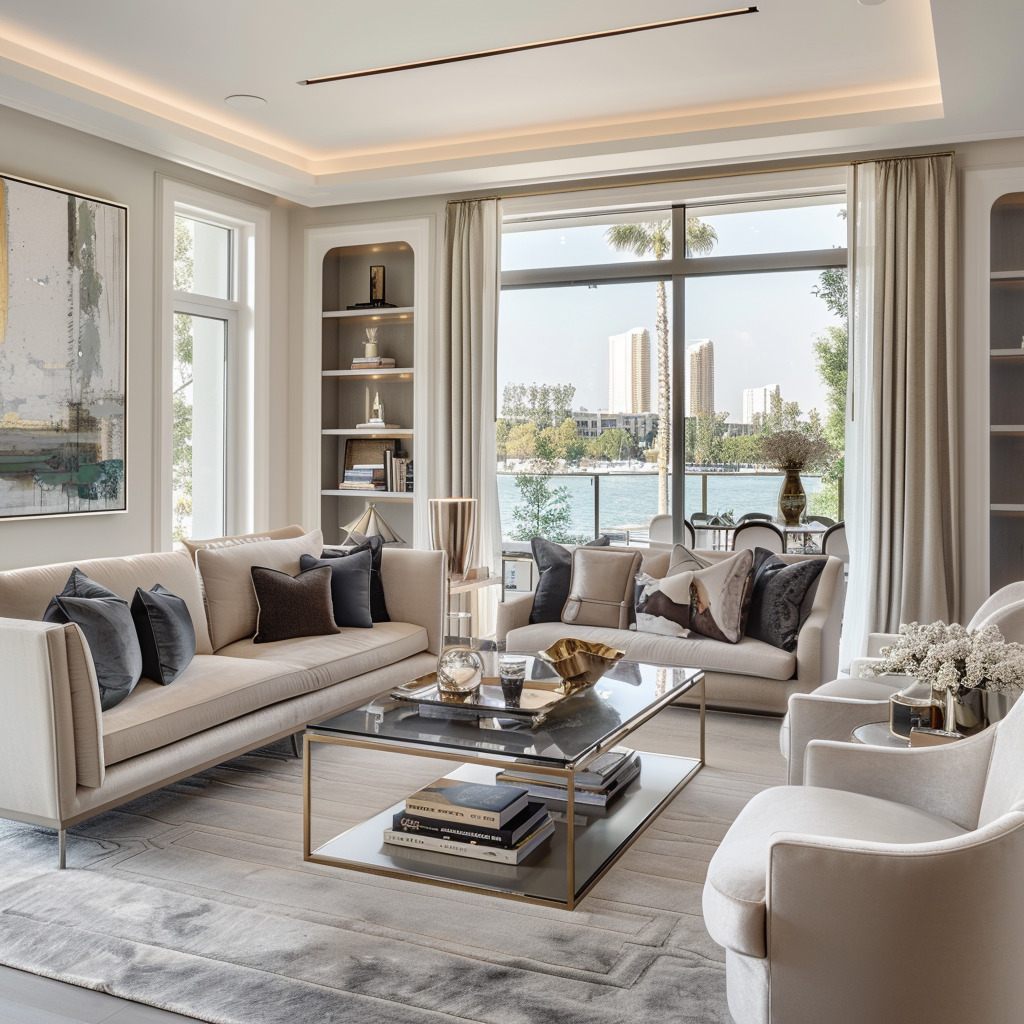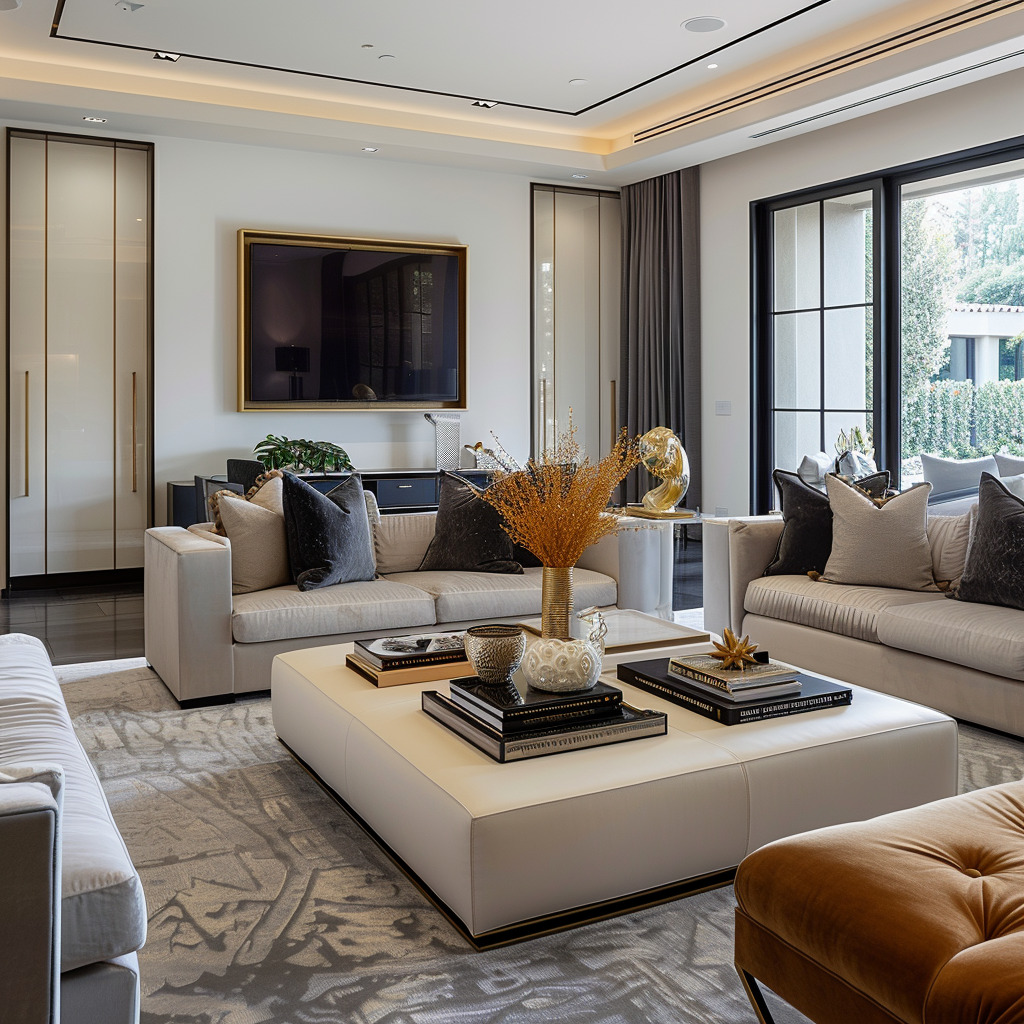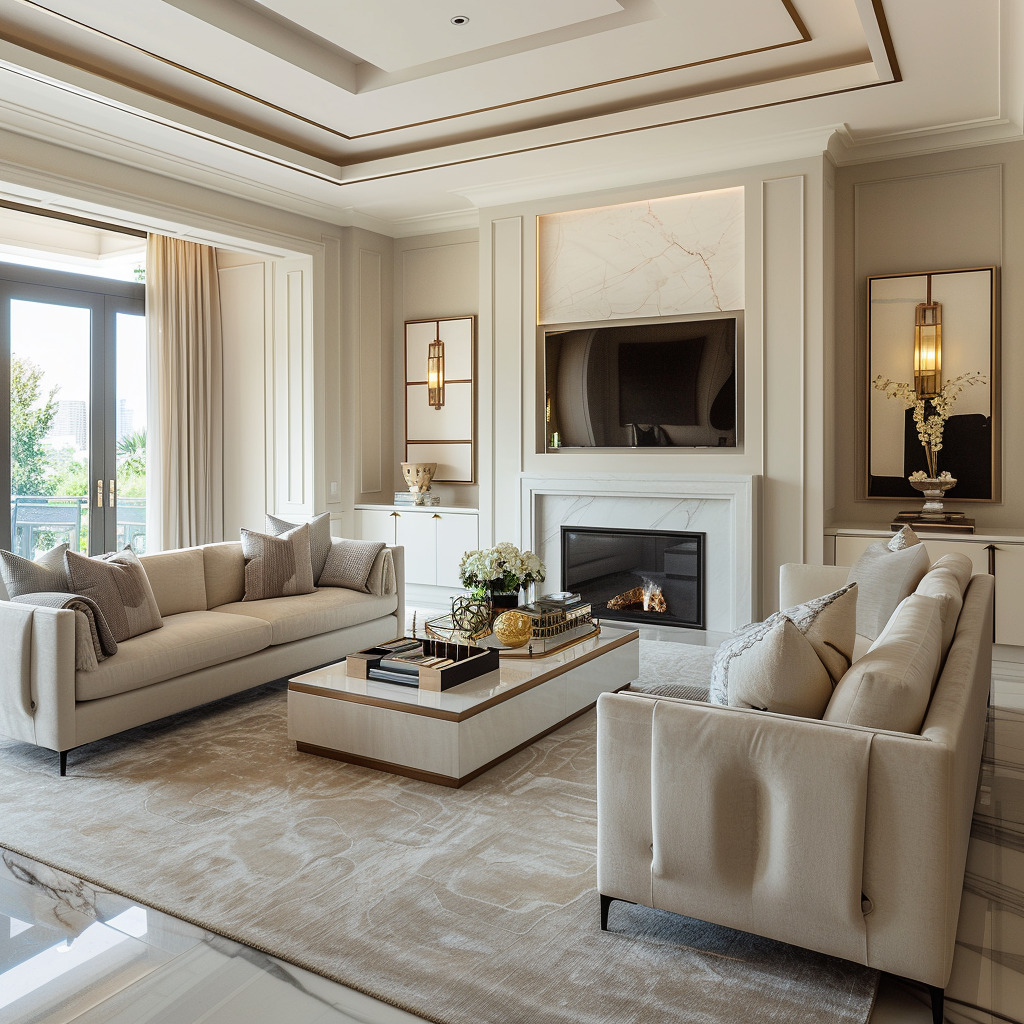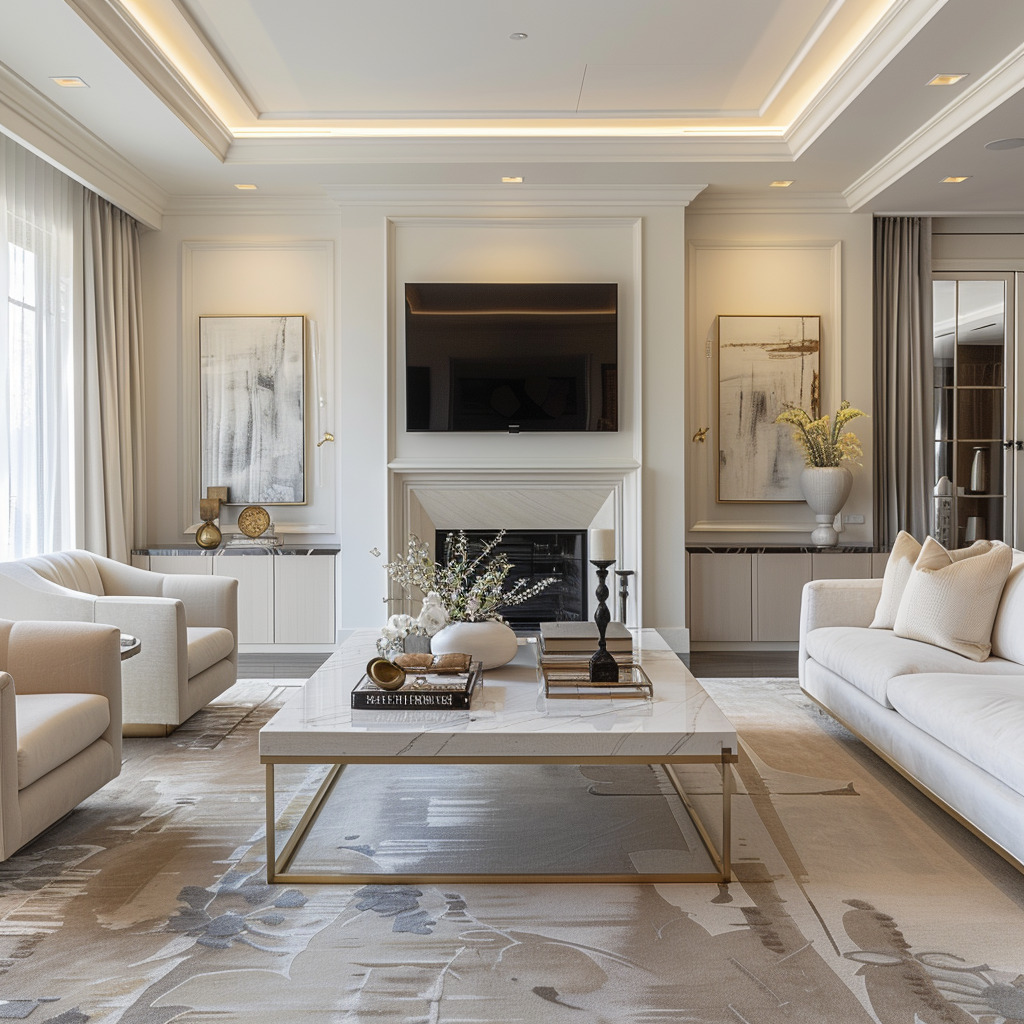The silent language of space and form speaks volumes. It is a dialogue between structure and spontaneity, a confluence of light, shape, and texture.
This nuanced conversation cultivates an environment that transcends mere aesthetics, inviting a deeper resonance with those who inhabit the space. This article seeks to explore the essence of interior harmony, a symphony of design elements that coalesce to create spaces that are not just seen, but felt.
From the orchestrated composition of furnishings to the meticulous layering of textures and hues, each aspect contributes to a unified whole. It is here that we find a testament to the power of thoughtful design, a testament to the notion that our surroundings are an extension of our very essence.
Visual Harmony and Balanced Composition
Achieving a harmonious balance is akin to composing a symphony. Each piece within the room must resonate with the others, creating an ensemble that is pleasing to the senses.
The strategic placement of objects and the symmetry of the arrangement lend themselves to a visual rhythm that guides the eye and spirit through the space. Proportions play their part, ensuring that the space neither feels cluttered nor sparse.
Functionality is blended into the form, with essential elements subtly incorporated, maintaining the aesthetic without sacrificing practicality. Lastly, the cohesion of design elements ensures a smooth visual and spatial transition, rendering the room as a unified canvas.
Strategic Placement of Decorative Objects
Beyond creating focal points, the arrangement of decorative objects like vases and books serves as visual anchors that define the space. The thoughtful positioning not only embellishes the environment but also guides the viewer’s gaze in a deliberate manner, ensuring that each piece receives its due attention.
Intentional Symmetry
Symmetry instills a sense of order and tranquility in a space. The bilateral symmetry observed in furniture placement creates a mirrored effect that pleases the eye, offering a sense of stability and formality.
This calculated mirroring can transform a simple room into a serene sanctuary.
Balanced Proportion of Decor to Space
Proportion is vital in maintaining an aesthetic equilibrium. By matching the scale of furniture and decor to the room’s dimensions, a seamless flow is established that allows for movement and comfort.
This balance prevents the overwhelming dominance of larger pieces and the inconsequence of smaller items.
Selective Visibility of Functional Items
There is an art to incorporating everyday items into the design without disrupting the visual flow.
Televisions and other modern necessities are nestled within the surroundings, becoming visible only when required. This allows the room to retain its stylistic purity while still fulfilling modern needs.
Cohesiveness in Design Elements
Cohesion is what turns a collection of objects into a comprehensive design story. By ensuring a common thread ties the elements together, the room tells a story of unity.
Whether through a consistent color scheme, material, or design era, each element supports the others, creating a seamless narrative across the space.
Elegance Through Detailing
The nuances of interior detailing are subtle brushstrokes that give depth and character to the overall canvas of a room. Just as fine detailing in a garment can set it apart, so too can the intricacies of ceiling work, trim, wall decor, and patterns define an interior space.
This attention to the minute aspects of design imparts a sense of finesse and completes the visual narrative of a room.
Detailed Ceiling Work
The ceilings play more than just a protective role; they are a canvas for adding dimensionality to a room. Recessed areas offer a play of shadow and light, enhancing the height and volume of the space.
This additional layer, with its subtle trim, draws the eye upwards, lending a stately air to the room.
Delicate Trim Work
Trim serves as the framework of a room, outlining and accentuating its best features.
Around fireplaces and along ceiling borders, trim work acts as a fine outline that defines the space. It can transform a plain surface into a work of art, adding a sense of crafted refinement to the room’s aesthetic.
Understated Wall Decor
Wall decor should complement, not command the space. Art pieces act as visual rest points, offering contemplative moments within the room.
The artwork’s scale and subject matter are chosen to harmonize with the surroundings, fostering an environment where each piece belongs within the larger scheme.
Discrete Use of Patterns
The strategic use of patterns brings texture and movement to a space without overwhelming the senses.
Whether it’s a geometric rug or a floral motif on a cushion, these patterns are selected to create a backdrop that is interesting yet calm. Their presence is felt but not overt, weaving into the room’s fabric subtly.
Texture and Material Synergy
The interplay of textures and materials within a space is critical in crafting an environment that invites both visual interest and physical comfort. It is the harmonious blending of hard with soft, transparent with opaque, and organic with synthetic that forges an interior that is not only a visual treat but also a tactile haven.
This careful orchestration of diverse materials contributes to a sophisticated and layered ambiance that is both inviting and aesthetically compelling.
Use of Glass
Incorporating glass elements such as tables and decorative pieces imparts a contemporary flair that amplifies the sense of space. This material’s transparency allows for an unobstructed view across the room, promoting a seamless flow of light and a visual continuity that connects various parts of the interior landscape.
Soft Textiles
Comfort is paramount in any living space, and the incorporation of plush textiles is key to achieving this. Throws and cushions, with their soft fabric, not only offer a welcoming softness to the furnishings but also provide an opportunity to introduce color and pattern in a subtle, approachable manner.
Elegant Window Treatments
Curtains provide a dual function of privacy and aesthetics. The fabrics chosen drape gracefully, framing the windows and softening the influx of daylight.
The choice of material and texture for these treatments plays a critical role in setting the room’s tone, from light and airy to rich and sumptuous.
Streamlined Fireplaces
A fireplace is traditionally the heart of a room, and in a modern setting, it stands as a fusion of form and function.
The clean, refined lines of these fireplaces echo the simplicity of modern design while still providing the age-old comfort of a hearth.
Stylish Yet Understated Accessories
Accessories complete the scene without dominating it. Items such as table lamps, bowls, and other accouterments are chosen for their ability to harmonize with the larger design ethos.
These pieces strike the perfect balance between functionality and style, enhancing the room’s feel without becoming the focal point.
Lighting and Color Dynamics
Lighting and color are the subtle yet powerful tools that interior designers use to set the room’s mood and atmosphere. This section focuses on how ambient lighting and selective use of darker tones can alter the perception of space, invoking feelings of warmth, depth, and elegance.
These elements are key in dictating the visual temperature and emotional resonance of an interior.
Ambient Glow
A carefully curated ambient lighting scheme does more than merely illuminate; it accentuates the room’s features, promotes a feeling of warmth, and can make spaces feel more intimate and cozy. The placement of light sources is considered to ensure a gentle wash of light that complements the time of day and the room’s natural lighting.
Selective Use of Darker Tones
Contrast is essential in any palette, and the controlled application of darker tones provides a visual grounding effect. These tones serve to delineate spaces within the room, drawing attention to specific areas without becoming visually heavy.
They work in conjunction with lighter tones to enhance the perception of space.
Sophisticated Color Gradients
The use of color gradients introduces visual depth and movement to a room. This technique, which employs a range of hues within a family of colors, creates a layered look that can add complexity and visual interest to walls, fabrics, and decorative accents.
Color Schemes and Mood
Beyond mere decoration, the color schemes influence the very mood and atmosphere of the room. Soothing neutrals or vibrant shades can dramatically alter one’s perception of the space, encouraging relaxation or stimulating conversation and activity.
Geometric and Spatial Fluidity
The thoughtful arrangement of diverse shapes and the masterful management of space are instrumental in creating an interior that breathes with a sense of fluidity. The geometric diversity draws the eye, providing both focal points and visual relief.
Uncluttered space is the invisible yet felt component that allows for an airy, expansive feel within a room, granting each piece of furniture and decor the space to be appreciated. This section highlights the importance of these spatial dynamics and how they contribute to a feeling of coherence and aesthetic unity.
Interplay of Shapes
Incorporating a variety of shapes into a space introduces a rhythm that guides the eye and intrigues the mind. The juxtaposition of angular coffee tables against the soft curves of side tables or rounded decor pieces creates a dialogue between forms that is visually engaging and brings a vibrant energy to the space.
Uncluttered Space Management
The strategic arrangement of furniture and decor in a manner that avoids overcrowding allows each item to stand out. This not only makes the space more functional but also gives it an air of sophistication.
The uncluttered approach provides breathing room, making the space more adaptable to the ebb and flow of daily life.
Harmony in Artwork
Selecting artwork that resonates with the interior’s design scheme is crucial for creating a unified look. Art pieces are chosen not only for their aesthetic appeal but also for their ability to integrate seamlessly with the color scheme, furniture style, and overall mood of the room.
Visual Flow and Movement
The visual flow within a room is critical to creating a welcoming atmosphere. This flow is achieved through the strategic placement of furniture and decor, which guides the eye smoothly around the space and encourages movement.
Spatial Arrangement
Dynamic spatial arrangement is about more than just the physical placement of objects within a room; it’s about how these objects interact with one another and the space itself. The layout is designed to be both visually appealing and functional, allowing for ease of movement and interaction within the room.
As we conclude our exploration of these interwoven design principles, it becomes evident that the alchemy of creating a resonant interior lies in more than the mere placement of objects and choice of colors. It is the intentional crafting of an atmosphere that evokes emotion and thought, a careful curation that shapes experience and memory.
The elements of visual harmony, elegant detailing, textural interplay, and dynamic spatiality merge to forge not only a distinctive aesthetic but also a sanctuary that reflects and embraces the intricacies of life itself. In this sanctuary, every element has a voice, and together, they speak of a silent eloquence that can only be achieved through the harmonious balance of design’s myriad facets.
It is in this equilibrium that the true spirit of a space is unveiled, offering a haven that is as timeless as it is contemporary.


